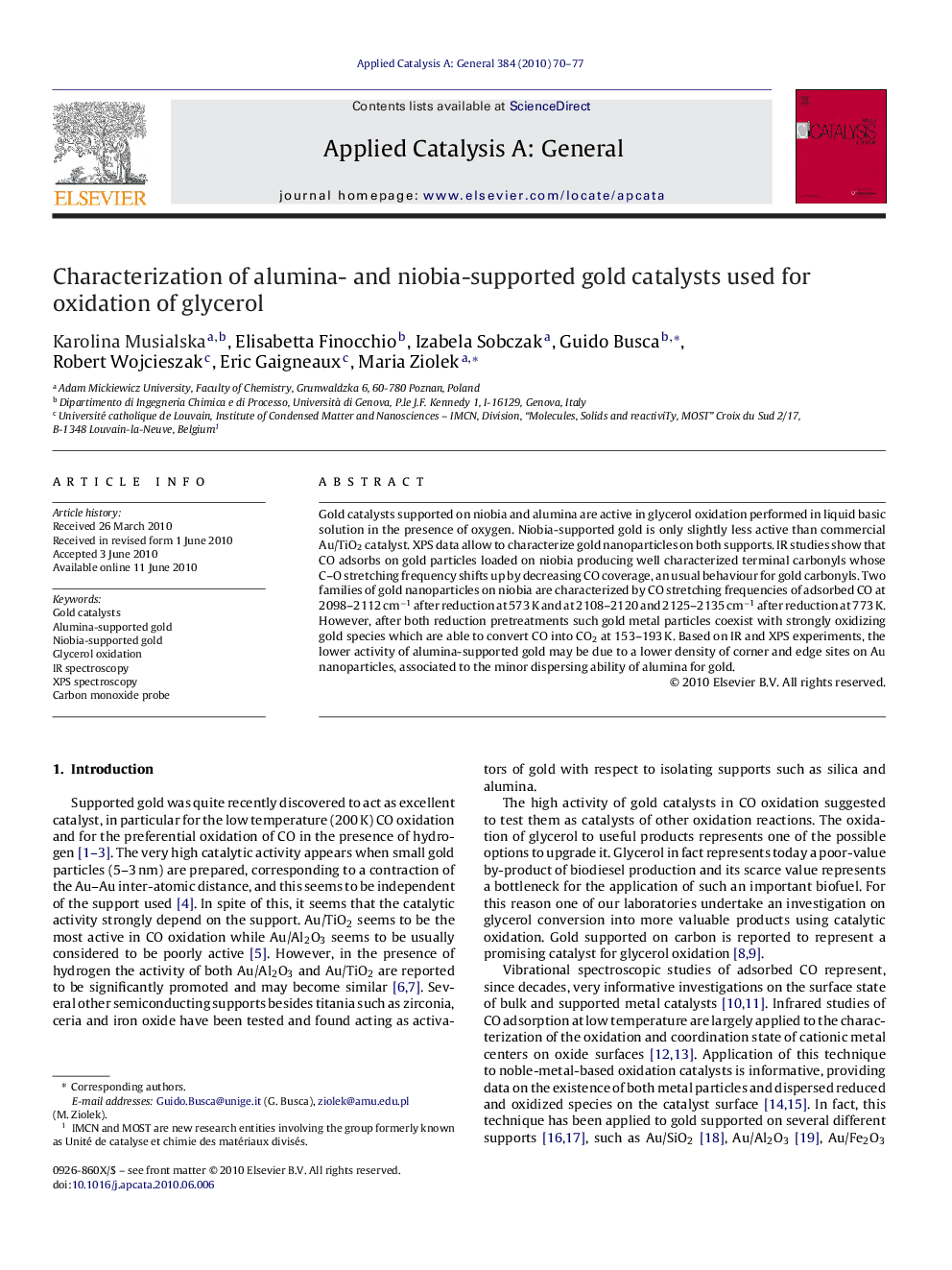| Article ID | Journal | Published Year | Pages | File Type |
|---|---|---|---|---|
| 41937 | Applied Catalysis A: General | 2010 | 8 Pages |
Gold catalysts supported on niobia and alumina are active in glycerol oxidation performed in liquid basic solution in the presence of oxygen. Niobia-supported gold is only slightly less active than commercial Au/TiO2 catalyst. XPS data allow to characterize gold nanoparticles on both supports. IR studies show that CO adsorbs on gold particles loaded on niobia producing well characterized terminal carbonyls whose C–O stretching frequency shifts up by decreasing CO coverage, an usual behaviour for gold carbonyls. Two families of gold nanoparticles on niobia are characterized by CO stretching frequencies of adsorbed CO at 2098–2112 cm−1 after reduction at 573 K and at 2108–2120 and 2125–2135 cm−1 after reduction at 773 K. However, after both reduction pretreatments such gold metal particles coexist with strongly oxidizing gold species which are able to convert CO into CO2 at 153–193 K. Based on IR and XPS experiments, the lower activity of alumina-supported gold may be due to a lower density of corner and edge sites on Au nanoparticles, associated to the minor dispersing ability of alumina for gold.
Graphical abstractFigure optionsDownload full-size imageDownload high-quality image (71 K)Download as PowerPoint slideResearch highlights▶ Gold-supported niobia-active catalyst in selective oxidation of glycerol with O2. ▶ The generation of active oxygen on the interface between Au particles and niobia. ▶ Au/Nb2O5 after reduction in hydrogen — able to convert CO into CO2 at 153–193 K.
